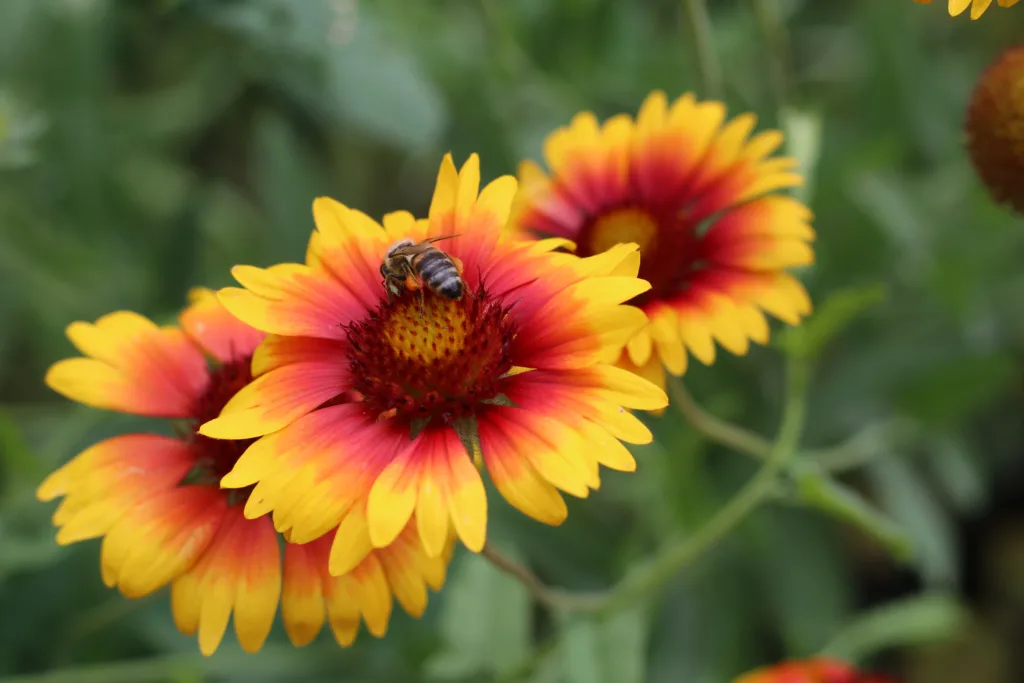
Gaillardia, commonly known as blanket flower, is a vibrant and resilient perennial that can brighten any garden with its bold, daisy-like blooms. Known for their red, orange, and yellow petals, Gaillardias are loved for their long blooming season and low maintenance needs. Caring for Gaillardia plants is straightforward, making them a great choice for both novice and experienced gardeners. This post will cover all the essential aspects of Gaillardia plant care, including soil type, light requirements, water needs, fertilizer, pest control, pruning, and propagation.
Soil Type
Gaillardias thrive in well-draining soil, which is crucial to prevent root rot and other moisture-related issues. These plants are not particular about soil quality and can grow in poor, sandy, or rocky soils. However, they perform best in slightly acidic to neutral pH levels. If your garden soil is heavy clay or tends to retain water, improve drainage by adding sand, gravel, or organic matter like compost. A well-draining mix ensures that the roots stay healthy and the plant remains vigorous. Remember, Gaillardias do not like soggy soil, so proper drainage is key.
Light Requirements
Gaillardias love the sun and prefer full sunlight to thrive. Planting them in a location that receives at least six to eight hours of direct sunlight per day ensures they develop their best color and produce abundant blooms. Inadequate sunlight can result in leggy growth and fewer flowers. If you live in a region with extremely hot summers, Gaillardias can tolerate some light afternoon shade to prevent the intense heat from scorching their leaves. However, too much shade will negatively impact their growth and flowering. Position your Gaillardias where they can soak up plenty of sunshine for optimal performance.
Water Needs
Watering Gaillardias correctly is essential for their health. These plants are drought-tolerant once established and prefer infrequent but deep watering. During the initial growing period, water your Gaillardias regularly to help them establish a strong root system. Once established, they can tolerate dry conditions, making them ideal for xeriscaping. Overwatering can lead to root rot and other fungal diseases, so it’s important to let the soil dry out between waterings. In general, water your Gaillardias deeply when the top inch of soil feels dry. Reduce watering during cooler months as the plant’s growth slows down.
Fertilizer
Gaillardias are not heavy feeders and can thrive with minimal fertilization. In fact, over-fertilizing can lead to excessive foliage growth at the expense of flowers. A light application of balanced, slow-release fertilizer in early spring is usually sufficient. You can also use a diluted liquid fertilizer once or twice during the growing season. Organic options like compost tea or fish emulsion can be beneficial and gentle on the plants. If your soil is already rich in nutrients, additional fertilization may not be necessary. Always follow the manufacturer’s instructions to avoid over-fertilizing and harming the plant.
Pest Control
Gaillardias are relatively pest-resistant, but they can occasionally attract aphids, spider mites, and leafhoppers. To control these pests, a strong spray of water can dislodge them from the plants. In severe cases, insecticidal soap or neem oil can be effective. Additionally, maintaining good garden hygiene by removing dead leaves and debris can help prevent pest problems. Slugs and snails may also feed on Gaillardias, especially in damp conditions. Use slug pellets, traps, or hand-picking to manage these pests. Encouraging natural predators like ladybugs and birds can also help control pest populations and keep your plants healthy.
Pruning and Deadheading
Pruning Gaillardias is essential to maintain their shape and encourage healthy growth. Deadheading spent flowers regularly will promote continuous blooming and prevent the plant from wasting energy on seed production. To deadhead, simply snip off the faded blooms just above a set of leaves or flower buds. In late fall, after the first frost, cut back the foliage to the ground to prepare the plants for winter dormancy. Regular pruning helps improve air circulation around the plants, reducing the risk of fungal diseases and keeping the plant looking tidy and vibrant throughout the growing season.
Propagating
Propagating Gaillardias is a rewarding way to expand your garden. The most common methods are division and seed sowing. To divide Gaillardias, carefully dig up the entire plant in early spring or late summer and gently separate the root ball into smaller sections, each with at least one healthy crown and roots. Replant the divisions immediately, ensuring they are at the same depth as the original plant. Water thoroughly and keep the soil consistently moist until the new plants establish themselves.
For seed propagation, sow Gaillardia seeds indoors 6-8 weeks before the last frost date or directly in the garden after the last frost. Lightly cover the seeds with soil and keep them moist until germination, which usually takes 14-21 days. Once the seedlings are large enough to handle, transplant them to their permanent location, ensuring they receive plenty of sunlight. Seed-grown Gaillardias may bloom in their first year, but they will reach full maturity and flowering potential in their second year.
Happy Gardening
Caring for Gaillardias involves providing the right soil, light, water, and nutrients, along with protecting them from pests and diseases. With proper care, these vibrant and resilient perennials can thrive and bring a splash of color to your garden from late spring through fall. Their low maintenance and long blooming season make them a popular choice for gardeners of all skill levels.
Please be sure to check out my Gardening Blog Post Page for more tips on all types of gardening. Including Seed Starting, Orchids, Water Gardening, Coldframe Gardening, Indoor Bulb Gardening, Hydroponics, Container Gardening, Mums, Herbs, African Violets, planting Bulbs, Flower Gardening, Vegetable and Fruit Gardening, Indoor Houseplants of all kinds, Cactus, Succulents, Hanging plants, Deer resistant plants and even Bird, Bee, Butterfly and Hummingbird Gardens!
